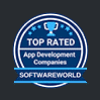Today people prefer to have everything in ease and convenience. And this will be provided with the introduction of on-demand mobile app development which is gaining incredible attention in the whole industry. If you are one who can be able to fulfil the demand and supply gap, then you are in the game of unicorn. The digital transformation has driven a dynamic shift in consumer behaviour has opened a vast opportunity for those who want to build a business with the concept of the on-demand market.
We can say that on-demand services such as grocery, food, medicine, etc. have great market segments. Now in this blog, we will discuss the on-demand massage app, which has a profitable venture because of the rise of the on-demand massage services.
Due to the fast and busy life today most people want a massage because of extreme tiredness and wish to relax. And they have no time or mood to go to a spa or massage parlour. With the arrival of on-demand massage app the user with few taps on the app screen and get the service done at the doorstep.
The growing market of the on-demand massage industry
According to the statistics, in the USA, the massage industry is generating 16.3 billion US dollars of revenue every year. The reason behind this is the massage industry obtaining this much of revenue is by seeking spa treatments ranged from medical reasons and pain relief to relaxation and stress relief, or just for the sake of indulging and pampering. The massage industry not only included tourism and relaxation clients but also including physical therapist-patient.
Let’s check the features and cost estimation for the development of on-demand massage app
Typical features of on-demand massage app development
For Users app
- Login: The user can log in to the app using the social media account such as Facebook, Google, or using their personal email id.
- Manage profile: Once the user login to the app, he can manage their profile information such as name, password, address and profile picture.
- Schedule Service: Select the service where the user can schedule based on their requirement.
- In-app chat: Once the user was assigned a service provider, the user then can have a communication with that person either in conversation or with the call option.
- Payment Option: Once the user is done with the work, he has flexible payment options such as cash, card or wallet either of the payment ways is available to the users.
- Review and rating: The user once completed the service, the user can review and rate based on the service provided.
- Notifications: Update the user with information such as booking confirmation, payment confirmation, in-app chat alerts, special offers, etc.
- Book now: Once the service provider was selected, the user can book to get the service.
- Tracking: The user can track the service provider in the map
- History: The user can view all the services that he placed previously and can re-request the service again just with a single tap.
- Promo-codes: Users can use the promo-codes to avail the discounts on the services.
Service provider
- Manage services: The service provider can manage their services; they have the option to accept/reject a new service request.
- Manage profile: The service provider can manage their profile information such as name, address, service radius and profile picture.
- Manage payment method: The service providers can manage their payment methods to make things easy to the user.
- Earning reports: The service provider can view their earning reports with all complete, cancel, running and pending service requests.
- Feedback: The service provider can view the users’ feedback with all the details
- In-app navigation: Using this, the service provider can reach the user destination on-time basing on the user booking requests.
- Check availability: The service provider can check their current availability before confirming service requests using the in-app calendar
Admin Panel
- Manage users: The admin can manage all the users who logged in to the app.
- Manage service provider: The admin can manage all the service providers those are using the service provider app.
- Manage payment options: The admin can be able to manage all the payment methods provided for users.
- Manage commission: The admin can fix the commission for the service providers based on the reviews.
- Manage reviews: The admin manages the reviews that are provided by the users to the service providers.
- App analytics: The admin can view app analytics, which provides the exact downloads of the app.
- Manage price: The admin will manage costs of the massage services which will be notified about the changes to the service providers and users.
- Manage notifications: The admin will share some crucial information to the users and service providers such as service policy updates, price updates and related information.
- Real-time tracking: The admin can track all the activities of the service provider and users such as post-service booking confirmation, booking cancellation, etc.
- Manage ads and promotions: The admin manages to have custom advertisements and promotions, which helps to attract more users.
What matters for the cost of development of on-demand massage app
The cost for the development of on-demand massage app initially looks at the investors on-board as the app requires to get traction in the defined niche. Initially bring on-demand massage app ideas in action is to start with only basic features which are known as MVP. The massage app development cost is dependent on various factors such as features, technology platforms and the region or location you want to develop your app. Once the app was into the market, later you can add value features at later stages. This will reduce the initial capital requirement for on-demand massage app development.
What is the development process for building on-demand massage app?
Bringing the on-demand massage app ideas into reality is complicated, which involves the multiple-stage process. Here is the whole development process described in simple steps:
Step 1: Initially for the development of on-demand massage app idea into reality we need to plan the concept of massage
Step 2: Wireframe will be created based on the plan, which helps to visualise the whole app.
Step 3: Once the wireframes confirmed, the designers will give the shape, keeping the user interface(UI) and user experience(UX) in mind.
Step 4: Using the designs created by designers, the developers will build the architecture and write the code according to the requirement of specified features.
Step 5: Once the coding part is done, testing all the features in details and integrating the whole structure.
Step 6: Now, the time for testing the on-demand massage app in real-time in a defined user group to thoroughly check the whole flow from start to finish in various conditions.
Step 7: Everything was up to the mark for the client expectation, then the on-demand massage app will be optimised for better search visibility and adaptability.
Step 8: Then, the on-demand massage app will be launched in the App Store or Play Store.
Apart from all the steps mentioned above, there are several sub-stages which involves active collaboration of app development team that comprises of project managers, designers, developers, and quality testers.
Krify is a leading web and mobile app development company in India and the UK. We offer on-demand apps for a diverse domain and also other apps for the startup business.
If you have an idea to develop a massage app, we will make your dream come true! We deliver the best massage app for your spa business. If you are interested then feel free to contact us!









